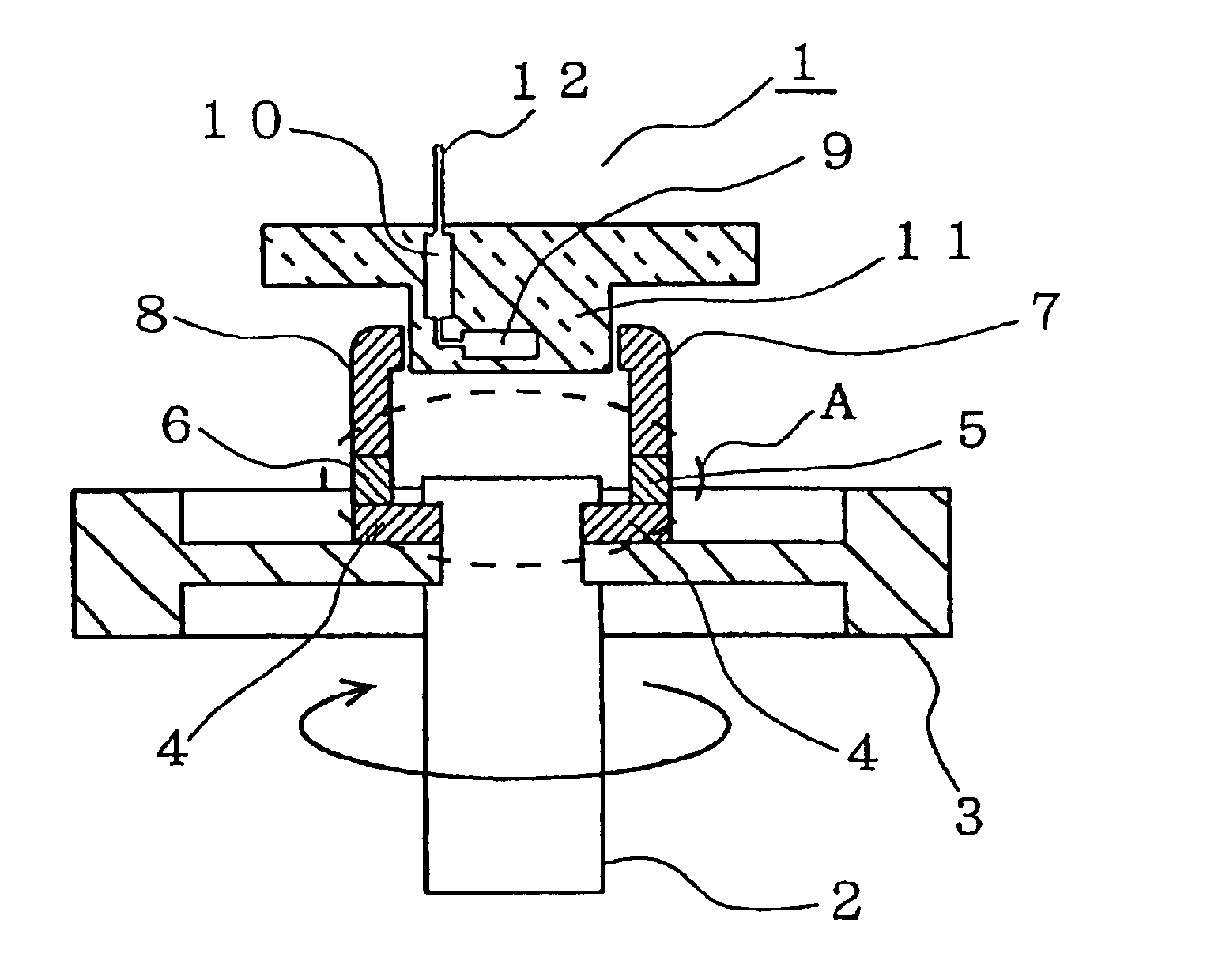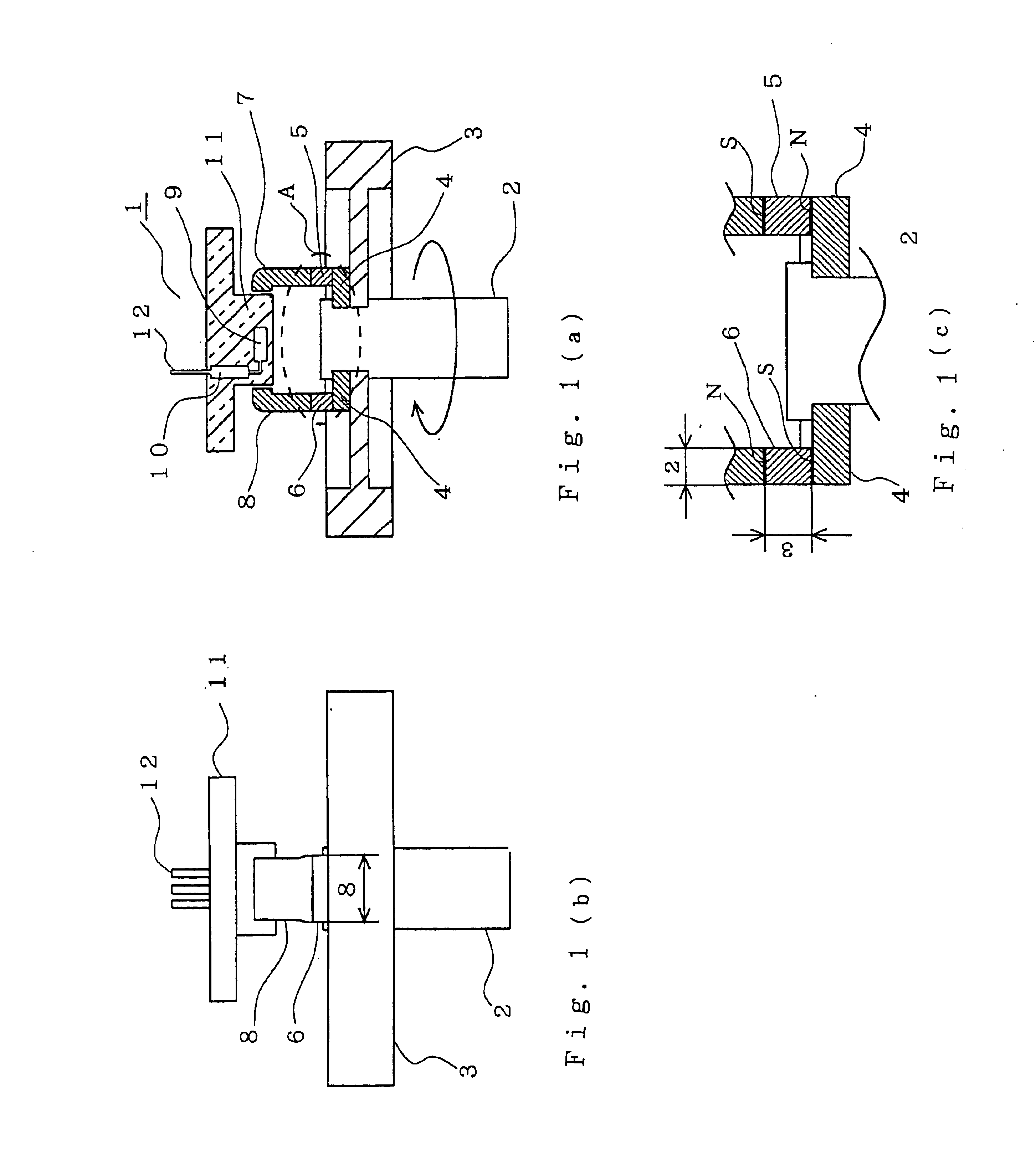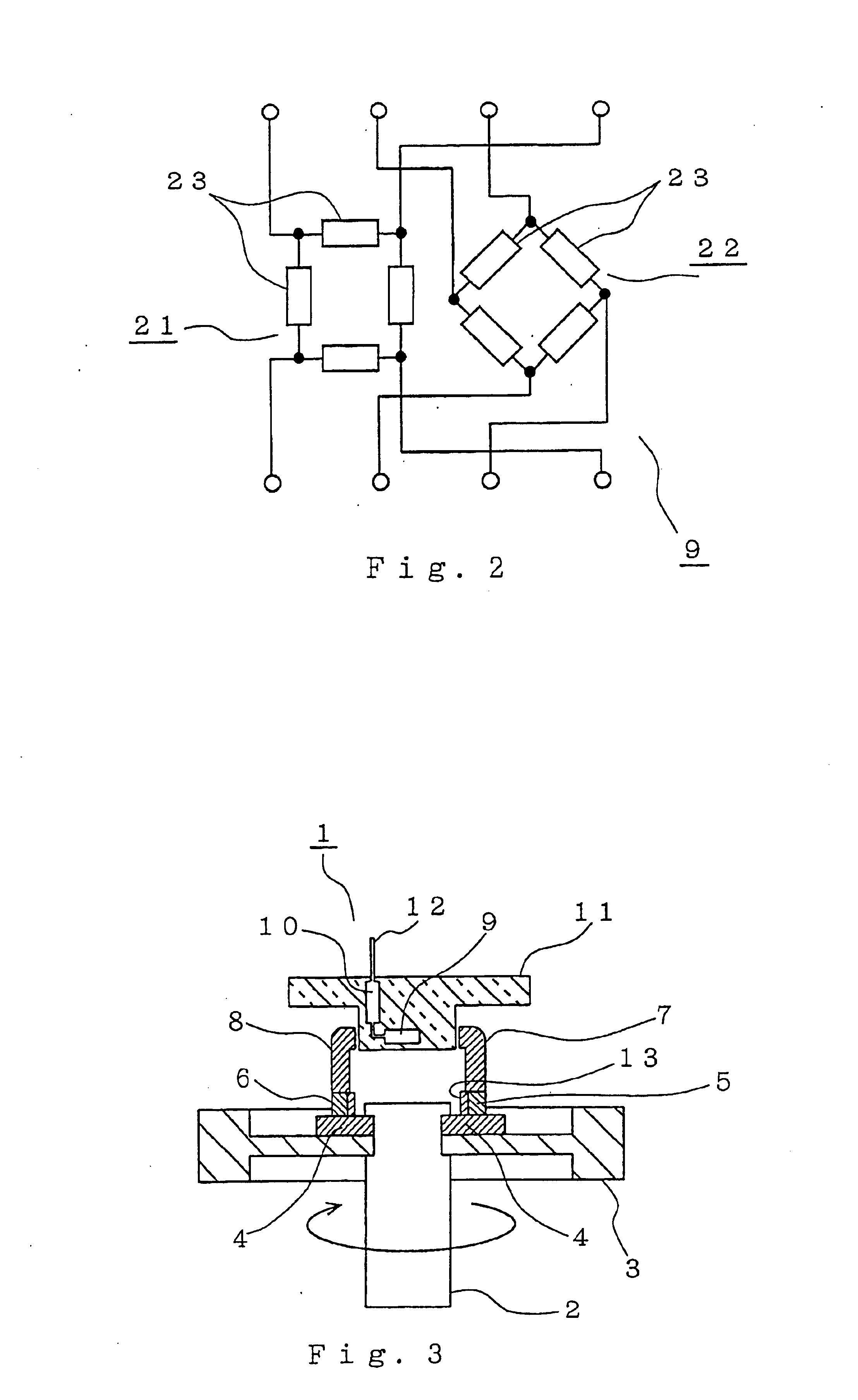Non-contact type rotation-angle sensing device
a sensing device and non-contact technology, applied in the direction of measuring devices, magnetic measurements, instruments, etc., can solve the problems of increasing cost, difficult to stabilize the density of magnetic flux, and inability to secure linearity, so as to remove the magnetic hysteresis of the sensor output and reduce the cost
- Summary
- Abstract
- Description
- Claims
- Application Information
AI Technical Summary
Benefits of technology
Problems solved by technology
Method used
Image
Examples
embodiment 1
Now reference is made to FIG. 1(a) showing a sectional view, FIG. 1(b) showing a side view, and FIG. 1(c) showing an enlarged view of an essential part of the sectional view in FIG. 1(a). In these drawings, a non-contact type rotation-angle sensing device 1 has a rotatable disk 3 (made of a non-magnetic material such as stainless steel) fixed to a rotary shaft 2 (made of a non-magnetic material such as stainless steel). Doughnut-shaped magnetic elements 4, 4 (made of iron such as steel plate) are respectively fixed onto the rotatable disk 3 symmetrically about the rotary shaft 2. Permanent magnets 5 and 6 are respectively fixed onto the two magnetic elements 4 symmetrically about the rotary shaft 2. Strip magnetic elements 7 and 8 (made of iron such as steel plate) are respectively fixed onto the two permanent magnets 5 and 6 symmetrically about the rotary shaft 2. A rotation angle sensor 9 having magnetoresistance elements (MR elements) perpendicular to an extension line of the rot...
embodiment 2
FIG. 3 is a sectional view showing a non-contact type rotation-angle sensing device according to Embodiment 2 of the invention. In the magnetic circuit, magnetic flux flowing from the N-pole to S-pole between the same permanent magnet is generated on a plane parallel to the polarizing direction of the permanent magnets 5 and 6. There is a possibility that the leakage flux therefrom interferes with the space around the rotation angle sensor 9 (magnetoresistance elements). In order to avoid this interference, it is necessary to dispose the rotation angle sensor 9 (magnetoresistance elements) at a distance (calculated specifically by a finite element method, for example) where the rotation angle sensor 9 is free from the influence of the permanent magnets 5 and 6. For that purpose, it is possible to prevent the leakage flux and shorten the distance by disposing a plate-like magnetic element 13 on the face where the leakage takes place.
The plate-like magnetic element 13 (made of iron su...
embodiment 3
FIGS. 4(a) and (b) show respectively a non-contact type rotation-angle sensing device according to Embodiment 3 of the invention, and in which FIG. 4(a) is a sectional view and FIG. 4(b) is a view showing a constitution of an essential part. An annular magnetic element 14 (made of iron such as steel plate) is disposed on the rotation angle sensor 9 (magnetoresistance elements) side of the permanent magnets 5 and 6. The annular magnetic element 14 is partially provided with a notch 15 in order to prevent magnetic flux getting in. Disposing the annular magnetic element 14 makes it possible to control the space and improve assembling efficiency. The annular magnetic element 14 also provides the advantages of the magnetic element 13 in the foregoing Embodiment 2 (i.e., prevention of interference of magnetic flux).
PUM
 Login to View More
Login to View More Abstract
Description
Claims
Application Information
 Login to View More
Login to View More - R&D
- Intellectual Property
- Life Sciences
- Materials
- Tech Scout
- Unparalleled Data Quality
- Higher Quality Content
- 60% Fewer Hallucinations
Browse by: Latest US Patents, China's latest patents, Technical Efficacy Thesaurus, Application Domain, Technology Topic, Popular Technical Reports.
© 2025 PatSnap. All rights reserved.Legal|Privacy policy|Modern Slavery Act Transparency Statement|Sitemap|About US| Contact US: help@patsnap.com



